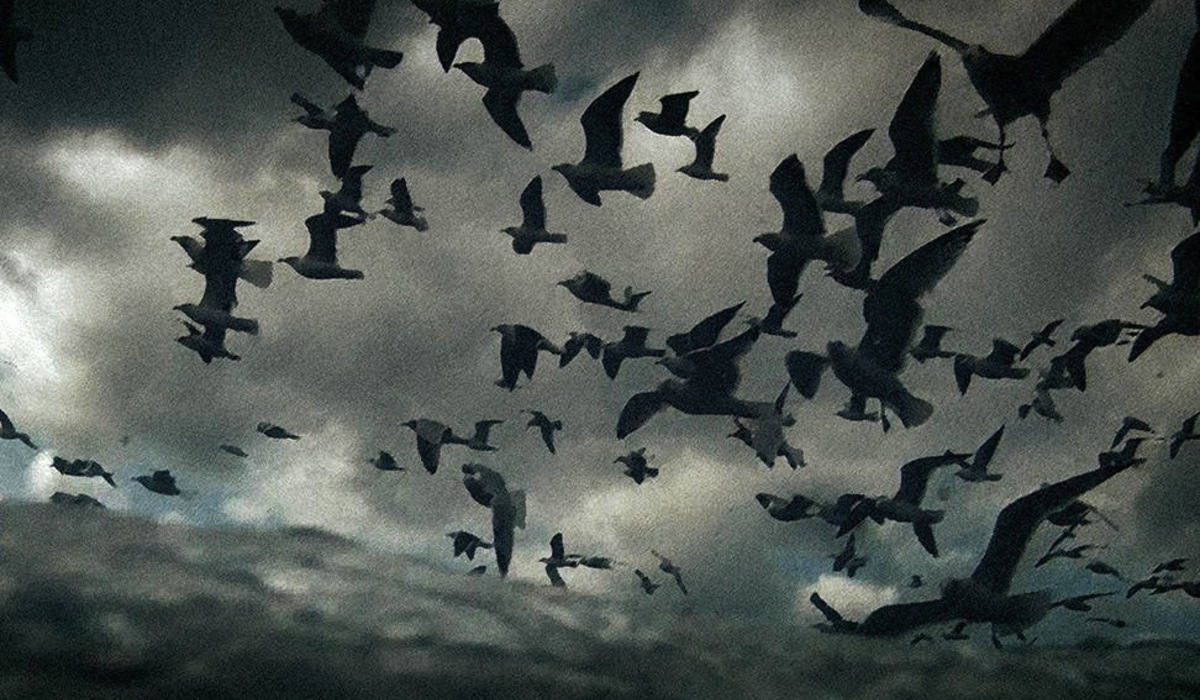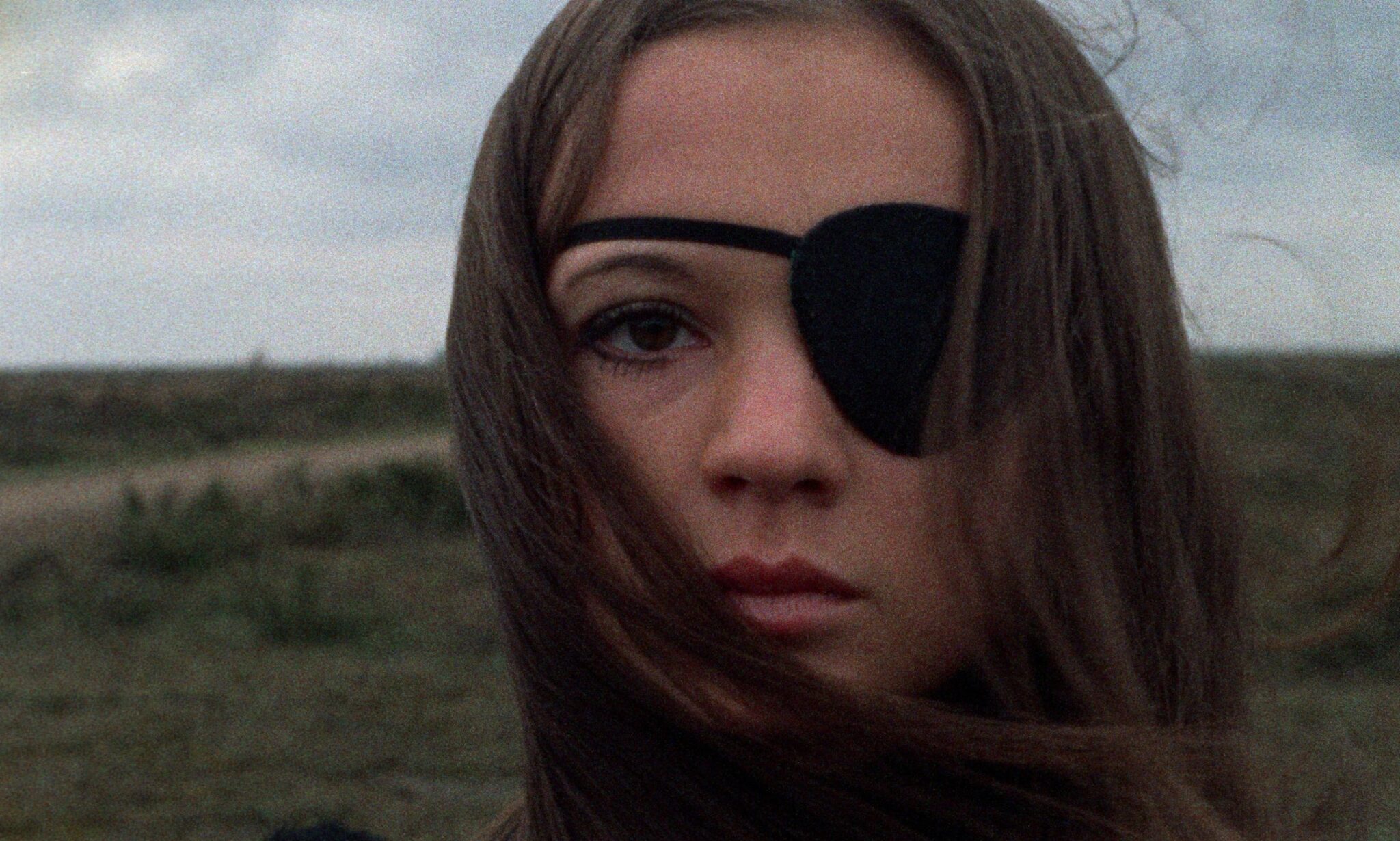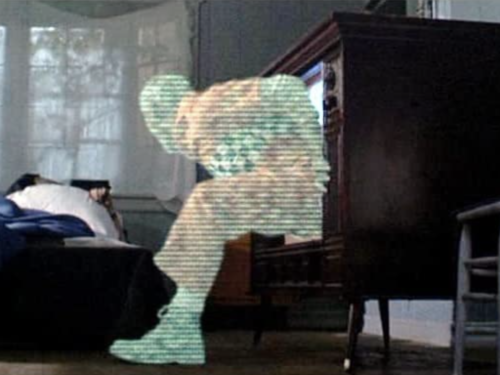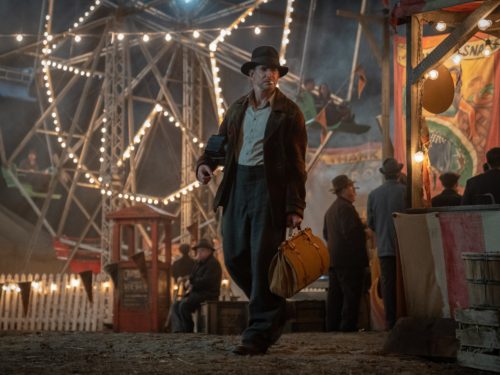Blending and subverting various cinematic forms, Sweetgrass and Leviathan both see the innovative Harvard Sensory Ethnography Lab working at the height of its powers
Most nature documentaries suck. I mean no disrespect to the hardworking directors and cinematographers who risk life and limb to familiarize us with the exotic. It’s just that I can’t think of another genre that employs a more consistent (or more tiresome) set of tropes. The bulk fall into one of two camps: either they’re characterized by pretentious narration and empty, eye-popping visuals or they’re children’s diversions with anthropomorphized critters and pat, pedantic life lessons. We might call these the BBC school of nature filmmaking and the Disney school of nature filmmaking. There is at least one exception. While Jean Painlevé’s work features moments of didacticism and the occasional corny comic beat, his filmography includes a number of essential documentaries. Throughout the last decade-plus, Painlevé has found worthy successors in the professors and students at Harvard’s Sensory Ethnography Lab (SEL). Founder Lucien Castaing-Taylor, his artistic partners Ilisa Barbash and Verena Paravel and students including J.P. Sniadecki, Stephanie Spray and Pacho Velez combine academic rigor and experimental flair like few filmmakers since Painlevé. They have established a new mode of nature documentary, one that prides experience over education and sensation over spectacle.
Even at their most chaotic, nature documentaries serve a mollifying purpose. They remind us that lions are meant to eat gazelles, that all living things (whatever their place on the food chain) will ultimately return to the soil. Whether addressing school children or stoners, the narrator of a nature documentary plays basically the same role every time: they are the voice of God. The SEL’s two nature films have a decidedly more specific focus. As Scott MacDonald writes, Sweetgrass and Leviathan are concerned with “conveying the experience of being present in a certain place in time as particular events occur.” Like episodes in the ongoing battle between predator and prey, these are events “with a considerable history.” Unlike those familiar sequences, however, they are events with “no apparent future.” SEL films don’t offer bromides about the circle of life and humanity’s place within it. They instead train an objective eye and ear on the precarious relationships we have somehow managed to build with the natural world and its inhabitants.

In Sweetgrass, this means following Montana sheepherders through the Absaroka-Beartooth Wilderness. Sheep were among the first domesticated animals and this 2001 trip was the last of its sort. As such, the film captures a process that’s both timeless and finite. Leviathan’s examination of a fishing vessel off New Bedford, Massachusetts, calls to mind nothing less than the ongoing, utterly futile battle to bend nature to our will. It’s a case study in the strange mix of bravery and hubris necessary to enter this battle for a living. Sweetgrass and Leviathan depict struggles and triumphs that aren’t so much eternal as they are altogether separate from time. What’s more, they capture something that even the best nature films and anthropological documentaries tend to miss.
Ethnographic films — nominally the SEL’s focus — are typically flawed for a number of more complicated reasons. They too project an air of authority, one that almost always invites controversy. Though the works of Timothy Asch and Robert Gardner are far more academically rigorous than Nanook of the North, even the best-intentioned research has an expiration date. Yesterday’s empathetic study is tomorrow’s horrifically reductive vestige.
By the time they began to examine Montana’s sheep ranches, Castaing-Taylor and Barbash were well-established figures in the field of visual ethnography and were equally well aware of its shortcomings. Both studied under Asch at USC and, in 1997, they co-wrote Cross Cultural Filmmaking: A Handbook for Making Documentary and Ethnographic Films and Video. According to MacDonald, they had grown “disenchanted with academic writing” by 2001 and had “redefined the kind of film they felt was worth making.” It took more than eight years for Sweetgrass to take its final form, but its aim was clear from the outset. Castaing-Taylor and Barbash wanted to reject both the sense of authority and the sense of detachment that characterizes cinematic ethnography. As directors, they don’t profess to know any more than their subjects or their audience. They are not teaching a lesson, but sharing in an experience and permitting us to do the same. The intense research they conducted — “about the history of the domestication of sheep, about the human communities across the planet that have supported sheep herding” and so on — is evident, but only if we’re willing to look and listen closely.

Working as a one-man film crew, Castaing-Taylor labors alongside his subjects. This is in keeping with the director (and the SEL)’s emphasis on experience. His work to create the film becomes analogous to the work onscreen and contributes to our sense of immersion. It is muscular filmmaking in a very literal sense, but it never draws attention to itself. Unlike earlier ethnographic filmmakers, Castaing-Taylor resists the urge to make his presence known at all. He never emphasizes how hard he’s working and never appears as a character in the drama onscreen. In this sense, the film looks like a response to Merian C. Cooper and Ernest Schoedsack’s Grass (1925). Cooper and Schoedsack are effectively the Gottfried Leibniz to Robert Flaherty’s Isaac Newton. Though Flaherty and Nanook get all the credit, Cooper and Schoedsack shot Grass more or less concurrently with that film. It follows the nomadic Bakhtiari people as they take an arduous journey across the Karun River and over the Zagros Mountains to bring their herds to pasture. The silent film’s intertitles provide moments of comic relief that personify animals and undercut some of its most stressful moments. It’s a primitive form of voice-of-God narration that predicts the cutesy tropes of nature filmmaking. They present themselves as rough and rugged characters and even screened the film for New York’s Explorer’s Club. Today, they cut a somewhat ridiculous figure and call to mind Carl Denham, the foolish director at the center of their later film King Kong (1933). Their presence is anti-immersive, drawing attention away from the Bakhtiari and underlining the artificiality of the whole endeavor. Castaing-Taylor takes the exact opposite approach. When the cowboys casually acknowledge him (“See ya, Lucien!”), it only brings us closer to their experience.
Barbash and Castaing-Taylor catalogue the hard work necessary to eke out a living as one of America’s few remaining cowboys, but Sweetgrass is not an exercise in lionization. The directors employ the iconography of the Hollywood Western in order to reflect on cinematic and historical myth making rather than validate it. They do this mostly by focusing on two cowboys in particular: John Ahern and Pat Connolly. The older, quieter Ahern provides Castaing-Taylor and his camera a number of opportunities to echo canonical Western images. We watch Ahern settle down for a nap with his hat over his face and listen as he whispers sweetly to the flock. One long sequence, shot from afar, sees Ahern silhouetted against the sky as he travels on horseback, silently watching over the pasture. Connolly’s characterization, on the other hand, refutes our idea of the stoic, strong-willed cowboy. Two sequences see him lose his cool and employ language that would make John Wayne blush. The first of these is doubly disorienting. Connolly stands atop a hill and complains to his mother over the phone. The sight of a cell phone is not unlike the site of a Radio Shack earlier in the film. It reminds us that Ahern and Connolly’s way of life is on the way out. Technology or no technology, it’s a testament to the film’s immersive powers that we sympathize with Connolly here. We’ve seen how challenging (and heard how cacophonous) this job can be. We understand why he’s starting to hate the mountains. Later, we learn that he’s come to hate — or at least resent — his flock, too. From a distance, we hear him call the sheep “dirty fucking pigs” and much, much worse.

These sequences work because they offer what MacDonald calls, “an intensified film experience based on and analogous to what seemed the essential elements of the experience of sheep ranching” while simultaneously placing us at an observational, more traditionally cinematic remove. Leviathan rejects that removed perspective. It’s a purely sensory film like nothing else before it. While Sweetgrass is a misleading title, suggesting a far sunnier look at pastoral life than the one we ultimately get, Leviathan suits Castaing-Taylor and Verena Paravel’s creation perfectly. It not only suggests the biblical beast, but describes the film itself. To paraphrase MacDonald again, Leviathan is a Leviathan; it’s a hulking, horrifying monster that swallows us whole and regurgitates us after its 90 minutes have passed.
The film’s GoPro footage (captured with dozens of cameras) recreates the harrowing experiences an inferior film could only imitate. We careen and crash alongside the filmmakers and their subjects. Besides a passage from Job, Castaing-Taylor and Paravel provide no context for Leviathan and its events. We’re without a life preserver throughout the film, often straining to make sense of its sounds and images. While we listen into Sweetgrass’s conversations like a fellow cowboy, Leviathan’s fishermen only address us (and each other) through a thick filter of noise. They’re barely audible over the slap of waves, utterly imperceptible in the face of nature’s fury. Leviathan lacks Sweetgrass’ conventional narrative structure, too. If its voyage is an event “with no apparent future” that’s only because it seems impossible in the first place.
Though it lacks Sweetgrass’ explicit references, Leviathan also forces its viewers to confront decades of cinematic tradition. The most obvious is perhaps the so-called “shaky cam” cinematography of mid-aughts action filmmaking. Pioneered by directors like Paul Greengrass, “shaky cam” was undoubtedly innovative, but filmgoers have long complained about its nauseating effects. Leviathan plays like a deliberate attempt to build a film around “shaky cam.” Watching it is (quite often) a genuinely nauseating experience. No other film, however immersive, communicates the same sense of disorientation as one sequence of Leviathan can. Better still, Castaing-Taylor and Paravel achieve this effect without the rapid cutting that typically characterizes “shaky cam” cinema. Like Sweetgrass, the film includes few shots shorter than 20 seconds. Moving back and forth alongside the boat, the viewer confronts every aspect of life at sea. Following cameras into the water, we see images that evoke everything from Stan Brakhage’s abstract expressionism to pre-cinematic shadow play. This long list of precursors is fitting for a film that’s massive in every sense. Even the film’s credits are titanic. They acknowledge everyone and every thing with a role in the film. By crediting each creature — fish, bird, skate — as a collaborator, Castaing-Taylor and Paravel explode the question of authorship. These animals, they suggest, are not just subjects, but artistic partners. Their role in communicating the experience of Leviathan is no less essential than anyone else’s. The decision reflects a uniquely democratic approach to filmmaking and even hints at one of the life lessons we might expect to learn from a more conventional nature documentary. Juxtaposed against their huge cast and crew, against the awesome, eternal power of the natural world, Castaing-Taylor and Paravel look insignificant.
Leviathan (trailer) from Cinema Guild on Vimeo.
Nature is obviously not the Sensory Ethnography Lab’s sole focus or even its primary focus. They’ve trained an objective and perceptive eye on a public park, a rail network, a recycling facility and (best of all) a Nepalese cable car. I would contend though that the SEL’s pair of “nature films” provide the perfect entry point to its work as well as the strongest evidence of the Lab’s subversive, immersive powers. Different as they are in both style and subject matter, Leviathan and Sweetgrass take nature documentaries, ethnographic documentaries and documentary filmmaking altogether in the same bold, new direction. They reflect on more than a century of cinematic and academic convention while undercutting our every expectation.
Follow our series of The Best of the 2010s in Film here
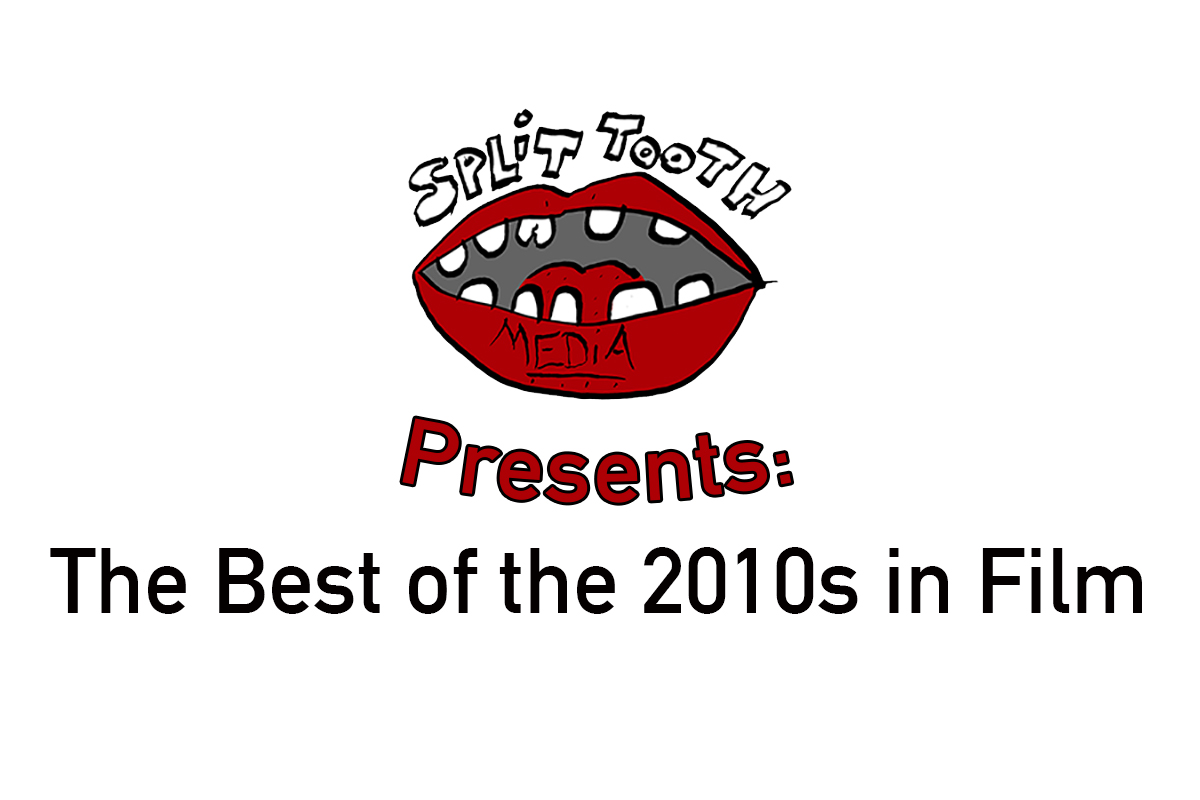
Follow Bennett and Split Tooth Media on Twitter
(Split Tooth may earn a commission from purchases made through affiliate links on our site.)

